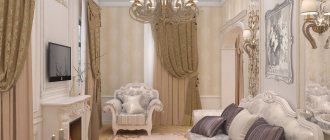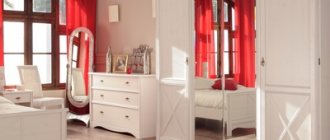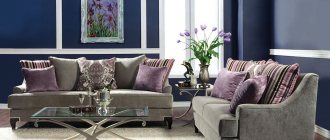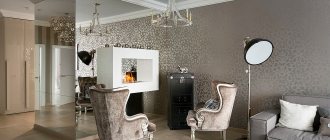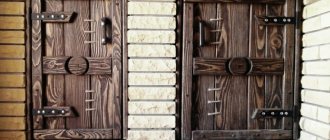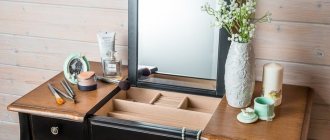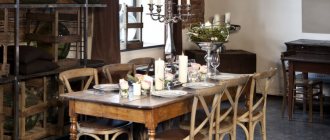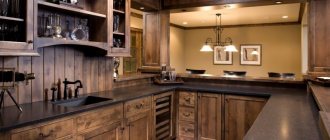Wax for furniture: description, how to use
From time immemorial, craftsmen covered wooden furniture with wax.
Thus, the wood received protection from various external influences. At the same time, she retained her natural beauty and warmth. Our ancestors also knew about the water-repellent properties of this product. Today, a fairly large number of wood processing options are known. But furniture wax retains its leading position. It is often used to preserve and emphasize the natural beauty of a wooden surface.
Benefits of use
Wax, unlike other types of protective agents, completely penetrates the structure of the wood and does not lie on the surface. Thus, the wood does not lose its texture and retains natural warmth. Furniture coated with this product can withstand long-term loads perfectly. This product has other advantages:
- The velvety quality of the material will remain, which is so lacking in polished furniture.
- Cabinets, chairs, tables and chests of drawers made of natural wood will become even more beautiful if they are coated with wax. Under the invisible coating of the protective layer, not only the texture appears, but also the color of the surface of the product becomes more expressive.
- Using a tinted type of material, you can create furniture that fits perfectly into the desired interior.
- Furniture wax is an excellent restoration product. The thick plastic mass fills any cracks, scratches and chips well and helps restore the original appearance of the headset.
The right shade will not only restore household items, but also make them even more beautiful. Furniture polish with wax is also an excellent restoration product.
Benefits of wax oil
Previously, yacht varnish was mostly used for this purpose, and it perfectly protected the wood from the harmful effects of moisture. The composition makes the color of the wood beautiful and rich, and the structure of the fibers – clearly expressed.
Oil-wax for wood coating
But varnish has its drawbacks. It wears out and cracks, and therefore needs to be renewed regularly (every 5-6 years, depending on the intensity of use). Removing the old layer is a complex process, and applying a new coating is associated with considerable difficulties. The varnish is toxic, and therefore precautions must be taken.
Compared to it, oil-wax has a number of advantages:
- Easy to apply. Even hand-prepared compounds can be easily rubbed into a wooden surface.
- Non-toxic. These products contain caustic components, and therefore you need to be careful when working with them. But most often, oil-wax is made from natural ingredients - non-toxic and safe for human health.
- Vapor permeability. If varnish tightly clogs pores and all kinds of holes, then oil-wax preserves them. Wood “breathes”, which leads to natural ventilation and prevents rotting processes.
- Practicality. When applied correctly, these compounds provide excellent protection against sudden changes in temperature, humidity and mold.
- Deep penetration. The varnish remains on the surface of wooden products, while the oil-wax penetrates deep into the structure of the fibers and provides more reliable protection.
If previously, when replacing floorboards, you had to remove the entire layer of varnish and reapply, now this can be avoided. You simply lay down a new board and coat it with the same compound that was used on the floor. This ensures a uniform structure of the entire coating.
When applying wax, the wood fibers remain free and not constrained. If the floorboards are laid on a heated floor system, then when the temperature changes, cracks will not appear on the surface of the wood, since it will be able to expand and contract in volume without deforming.
Types of wax
In stores you can see a large selection of different options for furniture wax. The following types are distinguished:
- Soft wax for furniture. Experts recommend using it for interior woodwork. This type of polish is great for restoring surfaces and removing chips, cracks, scratches and dents. It is also used for working with both wooden and laminated surfaces. Wooden panels of cabinet furniture and interior doors coated with soft wax perfectly withstand various physical loads. They maintain their integrity under the influence of high humidity and sudden temperature changes. The wax does not require pre-mixing; it is immediately ready for use. The mixture is applied to the required area using a special plastic spatula. Excess is removed with the same tool. If a specific color background is required, wax of different shades can be easily mixed.
- Hard wax for furniture can be used for both external and internal work. It fits perfectly on wood, not only protecting it from negative external factors, but also restores the damaged surface, repairing chips, dents, scratches and cracks. Unlike its soft counterpart, this wax for furniture restoration has a more dense structure. To work with the hard type of polish, a soldering iron is required. The wax is pre-melted using this device. And the already melted mass is applied to the desired area. After a few seconds, he grabs onto the tree. Excess material is removed with a plastic or rubber spatula.
Application
Various types of furniture wax can be used not only to mask damage to wooden interior items, but also for restoration, since it contains soft substances and wood particles that have undergone preliminary processing. The scope of application of wax chalk is quite extensive.
It can be used for processing cabinet furniture. Restoration is the direct purpose of crayons. They do an excellent job of masking chips and cracks, regardless of the depth of the damage.
The material is able to fill the resulting voids and improve the quality characteristics of wood in the process of hiding defects.
The main advantage of furniture wax in repairing damage is the creation of a pleasant shine. It returns a presentable appearance to wooden surfaces and saturates them with bright shades.
The next application is the restoration of floor coverings. Using furniture wax, you can effectively seal cracks that have appeared in a wooden floor, in particular on parquet and laminate.
During operation, due to excessive load, the coating wears out, which periodically requires restoration work. Thanks to furniture wax, this can be done very quickly and quite effectively. This simple technique allows you to save on service costs and extend the life of wooden floor coverings.
Wax is used to repair decorative elements. These include wooden paintings, boxes, wooden boxes, and other interior items made of natural materials. The need for a wax pencil for furniture against scratches is especially felt in a house where there are small children. To repair a damaged surface, it is enough to apply a small amount of the substance and the former appearance will be restored in a matter of minutes.
Wax materials are suitable for restoring wooden door frames and window frames. Having furniture wax on hand, you can easily restore windows and doors with your own hands. Wood products respond well to filling voids with wax.
Based on the above, it is clear that wax pencils are used mainly to renew wooden objects and return them to their former appearance. Wax is easy to use, it is harmless, it can be colorless and pigmented (colored).
How to properly apply wax to furniture with your own hands?
The work of treating wooden surfaces with wax will not be difficult if you study some rules in advance:
- We prepare the surface correctly. In order for furniture wax to be evenly absorbed into the structure of the wood, the pores of the wood must be open. If the furniture has just been assembled and its surface has not been treated with any paints and varnishes, no preliminary preparation is required. It’s more difficult if the furniture is already varnished. In this case, before applying wax polish, the surface must be treated with a solvent. This procedure will have to be carried out several times until all varnish particles are completely removed. After this, the wooden surfaces are treated with sandpaper. Important: work is carried out only in the direction of the fibers. The end result should be a perfectly flat surface.
- Apply furniture wax correctly. The consistency that the wax has is very important. Depending on its type, the work may require certain devices and tools. The liquid type of polish is rubbed in using a thick cloth with even movements in the direction of the wood grain. In some cases, you can use a brush or brush. For thicker wax, use a rubber or plastic spatula. Important: no matter what type of wax is used in the work, the wood must be left for at least an hour after treatment. After which the excess is removed. If the product is applied in one layer, the surface will remain matte. To achieve a glossy shine, it must be applied a second time.
White wax for wood. How to tint wax correctly to get white color
Natalya Viktorovna Ruzaeva, Quality Control Technologist
Wax coating is popular due to its unusual satin effect, which cannot be achieved using other coloring agents. White wax for wood is in demand, it has a light, cool shade, looks beautiful on walls and ceilings and perfectly masks wood imperfections.
What will you learn about in the article?
- Features of white wax
- Video: how to paint with wax correctly
- What white wax should I buy for wood?
- White wax for wood: tinting features
- Rules for applying wax emulsions
- Video: what paints and waxes we use in our workshop
Features of white wax
The coating is a natural preservative made from natural ingredients. It has an attractive matte tone that visually transforms the wooden surface.
White wax is most commonly used on wood furniture such as table tops. It is also used to cover floor coverings and wooden wall panels. A high-quality composition performs not only an aesthetic, but also a protective function. The high content of esters and fatty acids ensures the formation of a thin layer. It reduces the effect of adverse environmental factors, including high levels of humidity. The material has good water-repellent properties. And hard wax protects even floors and stairs and does not wear off from mechanical stress.
Photo 1. Imitation timber covered with white wax
4 reasons to buy white wax for wood:
- Masks the uneven texture of wood products. Using wax, you can achieve a beautifully uniform surface, even if the product is made from different types of wood.
- Light tinting allows you to create an unusual artistic effect. Such furniture and decorative items will look good both with and without additional accessories.
- The snow-white coating visually enlarges the space and makes the interior more comfortable.
- White wax can be used to prepare the surface for subsequent painting using colored coatings. This allows for an interesting, two-tone grout paint job.
Photo 2. White wax from Remmers
Video: how to paint with wax correctly
What white wax should I buy for wood?
To treat a wooden surface, special waxes or products containing oil and wax can be used. Such paints and varnishes have high protective properties. They immediately form an ultra-thin film, which increases the wood’s resistance to adverse environmental factors. Perfectly prevents abrasion and minor damage.
White wood wax with oil is also very practical. The oily solution is quickly absorbed and completely fills all cracks on the surface. The solution has a light texture and does a good job of protecting wood from rotting and deformation associated with drying out.
Photo 3. Brushed and waxed imitation timber
White wax for wood: tinting features
For decorative and protective coloring, wax with different color intensities is used. You can achieve the desired shade and degree of saturation using tinting. The wax is tinted using universal pigment pastes until the desired tone is achieved.
Pigment pastes must be added gradually or using special equipment. In this case, the total volume of the product used should not exceed 15% of the total weight of the wax. This is especially true when processing small products. Using an excessive amount of pigment can negatively affect the quality characteristics of the coating. You can purchase a ready-made product from us.
Photo 4. Imitation of pine timber under white wax
Rules for applying wax emulsions
White wood wax should be applied to a previously prepared surface.
Preparing a tree includes several stages:
- Removal of the old coating mechanically followed by treatment with a solvent. You can get rid of any remaining solvent using warm water.
- Sanding with an eccentric machine using 150 grit.
- Step-by-step application of wax to a clean and dry surface. First you need to treat a flat surface, then carefully walk along the joints where the first layer did not work.
- After drying, the wood can be polished with a soft pad or rag. The drying time will depend on the type of wax coating. On average it takes 1 hour.
Photo 5. Wax for wood
Video: what paints and waxes we use in our workshop
White wood furniture wax can be applied in one or two coats. When re-processed, the surface acquires a characteristic beautiful shine. To fix the effect, special protective hard wax is sometimes used. The transparent coating is applied after the wax has completely dried. The use of this composition improves the aesthetic characteristics and increases the water resistance of the surface.
See how we can
February 26, 2020222
Flawless white in the decoration of a one-room apartment
Apartment renovation is not really our area of expertise. But what can you not do for a regular customer? The house is done, now the apartment is done
Flawless white in the decoration of a one-room apartment
February 26, 2020
222
May 27, 20193550
White imitation timber in the interior of the house. Photo of the finished object
Imitation timber made from red-barked Angara pine, having appeared on the market, very quickly became a brand. And no wonder. Made from a side board (the company takes the entire middle of the log onto a block), the panel has virtually no knots; even in low grades, this wood is superior to both the needles of the northern regions and larch.
White imitation timber in the interior of the house. Photo of the finished object
May 27, 2019
3550
February 19, 20192763
Various options for white color in the interior of the house
LesoBirzha company is with you again
with new ideas and your completed projects.
Today we are putting on display the interior decoration
of a two-story cottage in the Tula region of SNT “Romanovskie Dachas” in light colors made of expensive, unique
Angarsk pine
.
Various options for white color in the interior of the house
February 19, 2019
2763
December 13, 20181960
Imitation of Angarsk pine timber in interior decoration
Imitation of timber
It was not at all by chance that the customer chose for the interior decoration of a private gym in the Zaokskie Prostori communal enterprise.
The harsh Siberian climate had a beneficial effect on the quality and properties of this type of wood, which are also preserved during subsequent processing into building material. Imitation of timber from Angara pine in interior decoration
December 13, 2018
1960
View other works
Making your own furniture wax
Some craftsmen use their own preparation in their work. The recipe is quite simple. To make it yourself, combine beeswax with turpentine. Consider the fact that the first component, as a rule, has rich shades of yellow. Therefore, for light-colored furniture you should use light-colored material.
The mixture is prepared in a water bath. Beeswax is crushed with a knife and placed in a jar of turpentine. The last component will need half as much as the first. The saucepan with the contents is placed in a water bath. After our main ingredient has melted, remove the container from the heat. Add the remaining wax little by little to the molten mass until a homogeneous thick mass is obtained.
Characteristic
There are several types of wax. It can be soft or hard. You can prepare the product yourself.
This wax is used only for restoring furniture. It is used if the material has a lot of scratches, cracks, chips and abrasions.
Soft
This type of furniture wax is recommended for use if the damage is deep. The soft composition ideally masks chips and will save you from deep scratches.
It does not need to be diluted or mixed with any substance. Bought it in a store and use it in the same form to hide damage.
How to use wax:
- Put on gloves and take a plastic spatula.
- Apply the product to the desired areas with a spatula so that not a trace remains of scratches.
- Use it to remove any remaining substance. Level the surface.
- The soft composition dries in 20 minutes. After this time, all that remains is to polish the furniture.
To keep tables and cabinets in proper shape, they should be varnished after the wax has completely dried.
If the damage is deep, apply the product in several layers. Each of them must be thoroughly dried before being polished and varnished.
You can use soft wax simply to renew wooden material. It is used for the restoration of cabinets, bedside tables, tables and even for flooring, for example, laminate.
Solid
If the house is undergoing renovation in full swing, and in the process of moving furniture you notice scratches appearing on it or on the floor, do not wait, and immediately get rid of them using hard wax.
- It does an excellent job of removing scratches.
- Perfectly masks minor abrasions.
- It also restores serious defects.
Wax pencils are easier to use than soft mixture. They are sold in different colors, so choosing the right product will not be difficult.
Be sure to wear gloves when using them. Substances used to make wax crayons can adversely affect the skin of your hands, causing serious rashes or redness.
Don't throw away the leftovers, but save them. If stored correctly, they can still be used.
How to use wax crayons for furniture:
- Melt it down. To do this, use a soldering iron, a gas torch or a regular lighter.
- Then cool a little so that the adhesion to wooden furniture is better and immediately apply to the damaged area.
- Remove any remaining product with a utility knife or plastic spatula.
- Wait for it to dry and paint the surface with varnish.
Wax pencil is easy to use but is more expensive than the soft stuff. There are no other differences.
There is also another remedy. It comes in the form of crayons that are sold in hardware stores. They can be oval or rectangular. They are the easiest to use because you don't need to melt them. With crayons they simply paint over the damaged surface and varnish it. They are sold in different colors.
Reviews of wax pencil
Wax pencils for furniture can also be used for floor coverings when the surfaces have cracks, scratches, abrasions, chips and damaged corners, as well as edges. Consumers emphasize that unraveling seams on laminated surfaces, chipboard and plastic can be successfully decorated with this material. The wax pencil, which often receives the most positive reviews, is completely ready to use and does not require heating, unless you plan to mix different shades.
There are no oily substances in the composition, so the ingredients, according to consumers, are well compatible with paint coatings on different bases. For more convenient application, home craftsmen advise using a plastic spatula, removing excess product from the surface using the same tool. Wax pencils for furniture are intended for indoor use, since they are not able, according to buyers, to undergo sudden changes in temperature and humidity.
Do it yourself
You can make this product yourself. The procedure requires care and caution, but overall it is not difficult. The main thing is to follow the algorithm of actions and do everything in accordance with the instructions.
How to make your own furniture wax - step by step guide:
- To prepare the product, you only need two ingredients - beeswax and turpentine. The first can be found on the market or bought from a beekeeper, the second is sold in a pharmacy and costs a penny.
- The mixture is prepared in a water bath. First you need to grind the beeswax and place it in a container that already contains turpentine. The ratio is 2:1, but you only need to add 1 part of the wax to the saucepan, the second at the end.
- Place the container with both ingredients in a water bath and wait until it is completely melted. When this happens, immediately remove the pan from the heat. Add the second part of the wax, stir until it melts.
The result should be a homogeneous thick mass. There should be no lumps. If, when you add the wax again, it does not melt completely, keep the saucepan with the mixture a little longer in the steam bath.
Alternative options
If you don’t have time to run for furniture wax, don’t have the funds to buy it, and don’t even have the desire to cook it yourself, use other folk remedies.
Alternative options for restoring a wooden surface:
- Grandmothers used to use walnuts to cover up damage and scratches on furniture. A cut of the kernel was rubbed on the damaged area for several minutes. The treated area was then wiped with a dry cloth to remove any remaining nut oil. The process is completed by sanding and coating with clear varnish. You don't have to buy a special polish; you can use it on your nails.
- To make the damage disappear on its own, it is recommended to use mayonnaise. It also contains oils and fats, which cause the wood to swell. Thus, the crack heals itself. The only drawback of this technology is the duration. For mayonnaise to work, it must be left on the damaged area for two days.
- For dark furniture, you can use cool tea leaves. Prepare a solution to match the color of the table; if necessary, dilute with water to obtain the desired shade. Apply tea leaves to the damaged area, let it soak in, then pour a little more, and so on until the scratch is hidden and the desired shade is achieved.
- An ideal alternative is ground coffee. It is poured into the scratch, the excess is removed with napkins, and the damage itself is hidden with varnish.
As you can see, you don’t have to spend money on wax or prepare it yourself. Everything can be solved at home, without major financial expenses.
Moreover, every housewife has such folk remedies; you don’t even need to run to the store for them.
Preparing the tree
To restore wooden furniture, you will need to prepare it well. To achieve the maximum effect from wax, cabinets, bedside tables and other products that require restoration must be cleaned.
Only after careful preparation will the product lie in an even layer.
You will need to do the following:
- Treat the surface with a solvent; it is important to remove all or part of the varnish coating.
- Then take the sandpaper and go over the cleaned areas.
- Then go over the furniture with a soft, lint-free cloth and begin applying the wax.
For dark wooden furniture, use a dark product; if they are white or beige, use a light product. Be careful when choosing.
The technology for working with different types of wax differs significantly. However, having familiarized yourself with the methodology for their use, questions about their use should not arise.
The hard and soft composition is easy to apply, just like one prepared by hand. The main thing is to carry out preparatory measures for the tree, and then use the purchased product.
What is furniture wax?
Furniture wax is a product for treating and restoring wood furniture. Interestingly, it was used by wood craftsmen in ancient times. Thanks to its water-repellent properties and ability to completely penetrate the structure of wood, wax remains incredibly popular today. It’s also convenient that using furniture wax is very easy to both remove chips and smooth out scratches and dents.
The advantages of using furniture wax over equally popular polishes are obvious:
- the velvety effect on the furniture is preserved;
- the color of the wood becomes more saturated and deeper;
- you can select the desired tone of the material;
- After processing, the furniture regains its original appearance.
There are two types of product:
How and when to use soft wax?
Soft wax is ready for furniture repair and does not require pre-mixing:
- open the jar with the product and a plastic spatula, apply it to the damaged area;
- Carefully remove excess wax with the same spatula;
- After 15-20 minutes, the treated surface should be polished, moving in the direction of the wood grain.
For final polishing of the surface, a thick felt or cotton cloth or napkin is ideal.
Advice: in case of deep damage, it is recommended to increase the operating time of the material and, if necessary, apply a little more of it.
It is optimal to use soft wax if necessary:
- update the surface of furniture;
- remove small scratches and shallow cracks;
- reduce the severity of dents or chips.
Which door wax to buy?
A professional product – furniture wax – will help in repairing damage to doors. The wax is securely fixed in cracks and does not wash out. Wax for doors can be soft, hard, or liquid.
Soft is used if you want to update the appearance of furniture and give it a more attractive appearance, remove minor scratches and small cracks, repair shallow dents and chips.
Hard wax performs the same restoration functions as soft wax, but this material gives a greater effect in eliminating deep damage due to its thicker and denser consistency.
The best aesthetic effect from the use of solid material is achieved due to its advantages such as high strength and resistance to mechanical stress.
The composition of liquid wax uses synthetic additives, thanks to which the required liquid consistency is achieved. The advantage of this type is the ease of application with a brush, penetration into any cracks and scratches.
Wax for door restoration can be found in the form of paste-like, creamy or oil-like mixtures, differing in composition, consistency, method of application and nature of damage (scratch depth, etc.).
Edding /Furniture wax for scratches, cracks, for restoration of furniture, doors, windows
edding 802 furniture wax. Beech-maple color. 3 colors per pack. A mixture of mineral waxes colored with natural coloring pigments. Very easy to use.
Wood wax MINWAX Paste Finishing Wax, natural 453 grams
Minwax Paste Finishing Wax is a furniture wax polish with a finishing coating. Protects the surface and adds the finesse of a hand-finished finish. Recommended for furniture, antiques, woodwork, cabinets, doors, panels and accessories that do not require a rigid polyurethane protective layer.
Instructions for using hard wax
Hard wax for furniture copes well with surface damage, and also restores and restores wood coverings with serious flaws. It is optimal to use it for outdoor work.
The difference between soft and hard wax is in their structure, which determines the different technologies for using the product. Hard wax has a dense, thick consistency. To properly and efficiently apply it to the damaged area, you will need a soldering iron. With its help, it is necessary to melt the material and only then apply it to the surface. The setting time of the product ranges from a few seconds to a minute. After this, excess material is removed with a rubber or plastic spatula, and the finished coating is polished.
Tip: to get a glossy rather than matte surface, repeat the procedure after an hour, when the first layer is well established.
Note that without the necessary experience, applying hard wax is quite difficult. Practice on a small piece of wood or immediately seek professional help.
How to prepare the surface for processing?
Now you know how to use hard and soft waxes for furniture. The application of the material will be of better quality if the surface is prepared in advance.
So, to achieve maximum effect, the pores of the wood must be open. This way the wax will evenly penetrate the wood structure and lay down in an even layer. That is why lacquered furniture must be cleaned of varnish before waxing. We will show you how to optimize this procedure:
- we treat the varnished surface with a solvent until all the varnish is removed - most likely, several approaches will be required;
- the next step is to use sandpaper, which needs to process the surface of the wood until it is perfectly smooth;
- Finally, we clean the surface with a soft cloth and you can proceed to applying wax.
Attention: it is critical to carry out all work in the direction of the wood grain so as not to damage its structure.
Furniture coated with wax at home
There is a simple recipe for making furniture wax with your own hands. You need to take 100 g of beeswax, grind it and melt it in a water bath. Add 50 g of turpentine and continue heating the mixture until smooth. Add 25 g of rosin and an arbitrary amount of propolis there (to give the product a pleasant smell). After the mixture has cooled, you can lubricate the furniture and polish it well with a rag. Homemade wax is not inferior in quality to store-bought wax. With its help, you can easily restore the appearance of old, damaged furniture, seriously saving on the services of craftsmen!
To work with a soft type of wax, you will need a small spatula, a construction knife with a sharp blade, and felt material. Wooden objects are restored by filling the resulting voids with wax. First, the substance is scooped up with a spatula and applied to the site of damage (scratches, cracks).
Excess is carefully removed with a knife, otherwise there is a high probability of creating new scratches. To smooth the material, you need to use a plastic corner to make circular movements. The treated surface is polished with a felt cloth until the structure is completely homogeneous. If hard wax is used, it is melted using a soldering iron, gas torch or lighter. Heated material at room temperature is applied to chips, cracks and leveled. If necessary, the surface is sanded with a soft cloth.
Furniture wax does not remain on the surface, but penetrates into the structure of wood or other wood-based materials
Making your own wax
If you wish, you can prepare furniture wax yourself. The recipe is quite simple, but it is important to adhere to the manufacturing technology.
DIY furniture repair wax contains only two ingredients:
Important: If you plan to cover light-colored furniture, use lightened beeswax.
Follow this sequence of actions:
- pour one portion of turpentine into a glass vessel;
- finely chop two portions of beeswax and also add to the vessel;
- place the glass container in the pan and place it along with the contents in a water bath;
- after the beeswax is completely melted, turn off the heat and remove the container;
- mix all the ingredients and, if the product turns out to be too liquid, add a little more beeswax, achieving the desired consistency;
- store the finished product in a tightly closed container.
Important: turpentine is highly flammable, so do not keep it on fire for long.
How do you know if the wax is successful? Wait until it cools completely and evaluate the degree of thickness. If necessary, place the product in a water bath again and adjust the thickness by adding one or another ingredient.


